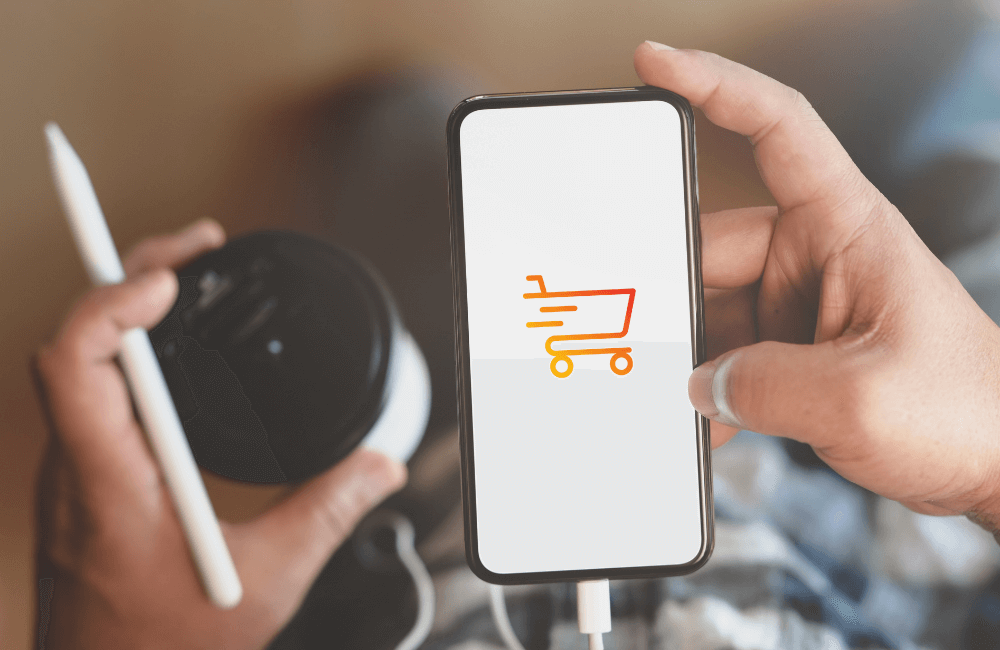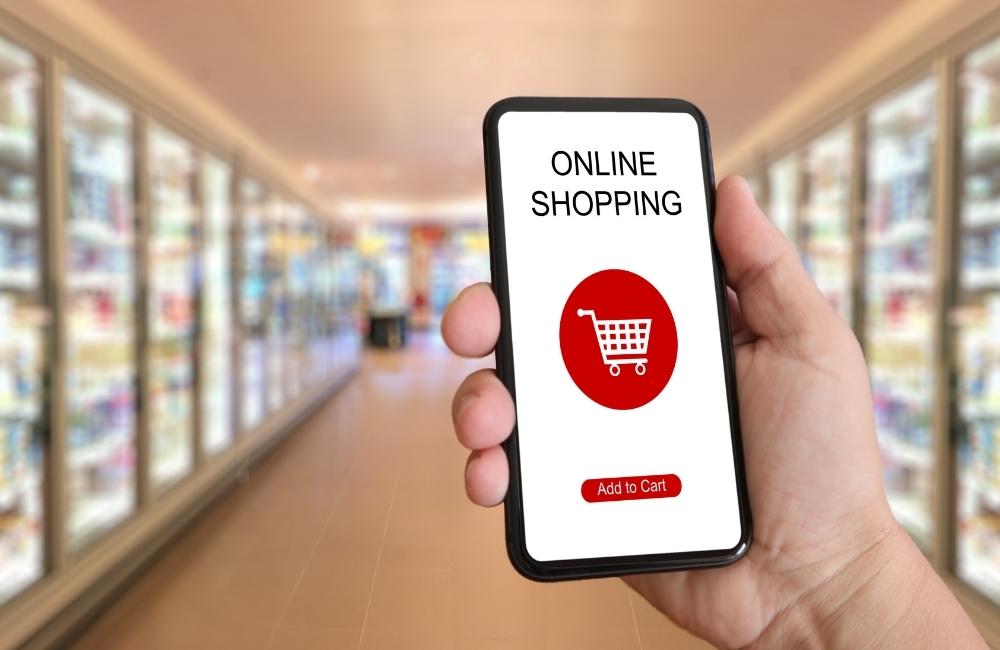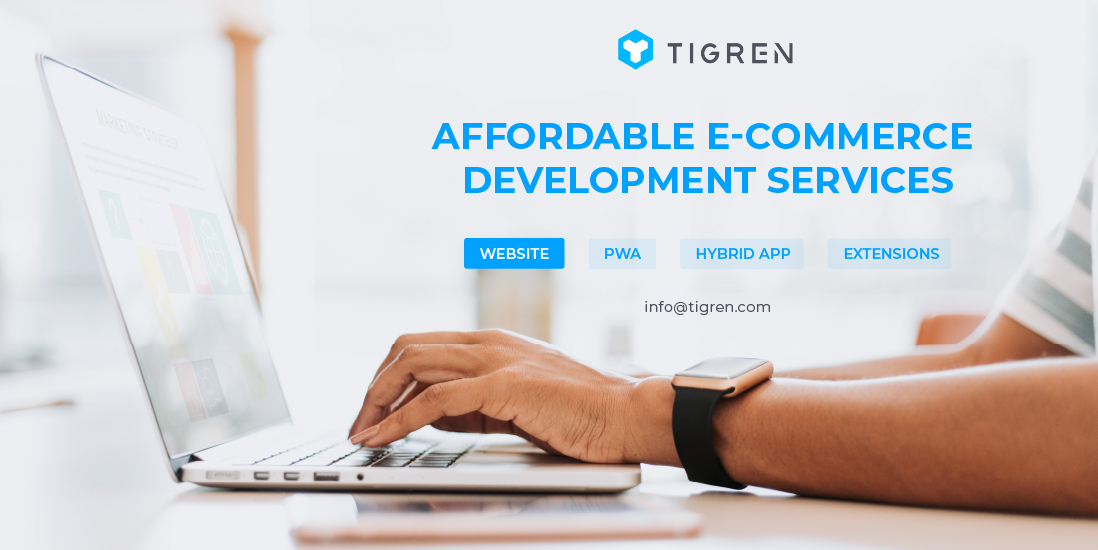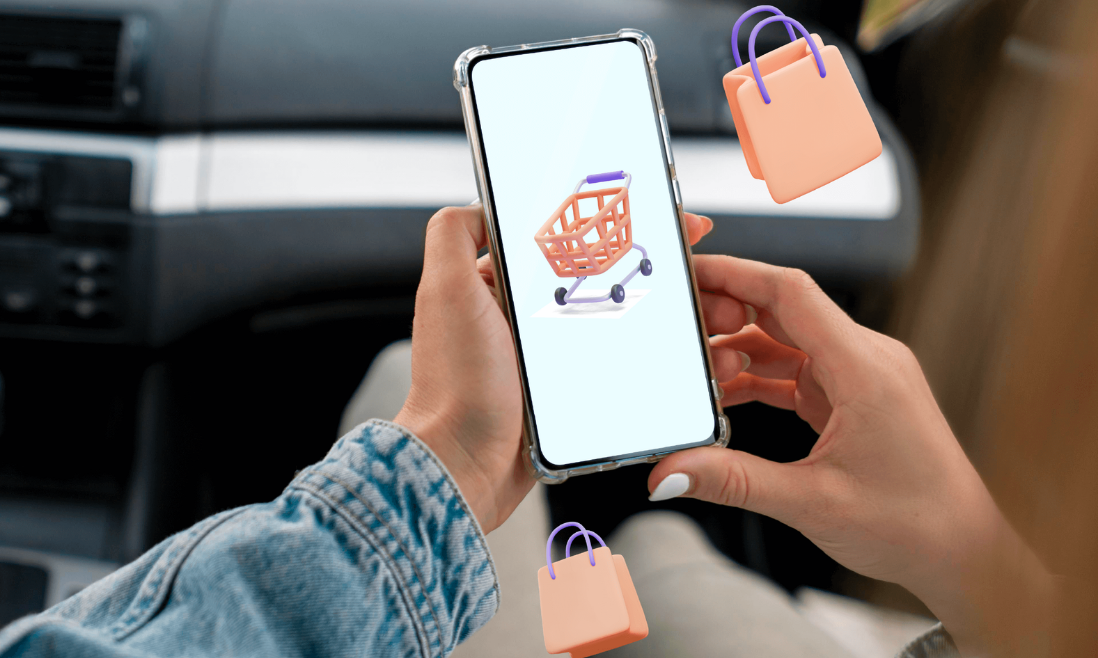From everyday essentials to luxury goods, people are making more online purchases than ever before. The shift to online shopping has reshaped the retail landscape, ecommerce has transformed the way we buy and sell. For businesses around the globe, embracing ecommerce app development isn’t just a choice; it’s a necessity.
Get ready to explore the core principles, must-have features, and critical considerations that will turn your ecommerce app concept into a reality. Whether you’re a tech-savvy startup founder or a seasoned entrepreneur looking to expand your online presence, this guide is your key to creating a top-tier ecommerce app.
Contents
What Is Ecommerce App Development?
Ecommerce app development is the process of creating specialized software tailored for mobile devices, including smartphones and tablets, with a primary focus on facilitating online business activities.
These applications integrate key commercial features commonly associated with e-commerce platforms, such as product search, secure payment processing, and efficient shipping methods. Essentially, ecommerce apps serve as a bridge between consumers and online stores, bringing the shopping experience directly to users’ mobile devices.
Ecommerce app development goes beyond merely enhancing the ability to make purchases; it also plays a pivotal role in encouraging customer demand, strengthening brand presence, and providing efficient customer support. These applications are instrumental in fostering lasting relationships with customers, ultimately cultivating brand loyalty.
At its core, ecommerce app development involves a comprehensive set of activities, including designing, developing, and implementing essential functions and user interfaces that cater to the specific needs and preferences of mobile users.
It aims to create a seamless and user-friendly environment where consumers can browse, shop, and interact with businesses, resulting in a mutually beneficial online shopping experience.
Why Ecommerce App Development is Crucial

The sheer number of active smartphones in the world, approximately 4.6 billion, underlines the vast potential of mobile commerce. The ability to shop from your smartphone offers a level of accessibility that was previously unimaginable, allowing users to make purchases anytime and anywhere.
The growth of mCommerce is undeniably impressive and shows no signs of slowing down. Insider Intelligence predicts that mCommerce sales will reach a staggering $534.18 billion, accounting for 40.4% of total ecommerce sales, by the year 2024.
Furthermore, services like Paypal, Apple Pay, and Amazon Pay have simplified and expedited transactions. Customers now can make purchases with just a few taps, even when dealing with businesses across international borders.
The significance of ecommerce app development has never been more apparent. Customers are not only willing but increasingly eager to download and use business apps, often installing them voluntarily, even without direct influence from the seller. This shift is indicative of a fundamental change in consumer behavior and preferences.
Lockdowns also had a profound impact on the ecommerce app development landscape. The COVID-19 pandemic significantly accelerated the growth of ecommerce as people turned to online shopping for a wide range of products, from sneakers and sunglasses to pharmaceuticals and office furniture. Ecommerce apps have become the preferred and most convenient avenue for making these purchases.
Types of Ecommerce Apps

Ecommerce apps come in various types, each tailored to facilitate different types of business activities and transactions. Here are the primary categories of ecommerce apps:
B2B (Business-to-Business) Ecommerce App
B2B ecommerce apps enable business-to-business transactions. They facilitate the exchange of goods and services between businesses through a mobile channel. These transactions often involve large quantities and play a crucial role in the supply chain.
Notable examples include Alibaba and Amazon Business. In this model, industries sell to retailers, who, in turn, may sell to consumers. The products traded within B2B apps can serve as raw materials or items for sale in other industries.
B2C (Business-to-Consumer) Ecommerce App
B2C ecommerce apps cater to the business-to-consumer model. These apps connect companies directly with end-users, allowing sales to occur directly through the application channel. Businesses such as Domino’s offer a wide range of products to consumers.
B2C apps provide consumers with direct access to a company’s entire product catalog, often offering a more extensive selection compared to retailers who deal with multiple brands.
C2B (Consumer-to-Business) Ecommerce App
C2B ecommerce apps facilitate consumer-to-business transactions, where consumers provide services or assets to businesses. These apps, exemplified by platforms like GitHub, offer subject matter experts a platform to showcase their skills and build business relationships. Businesses benefit from unique talents and expertise available through such channels.
C2C (Consumer-to-Consumer) Ecommerce App
C2C ecommerce apps enable consumers to exchange products, services, or offerings directly with other consumers, bypassing the involvement of businesses or companies. Apps like eBay exemplify this model, allowing users to sell their items to individuals with similar needs or interests. Such apps foster connectivity within a broader community of users.
Each type of ecommerce app serves a distinct purpose, addressing unique transactional needs and user preferences. They play a pivotal role in the evolving digital commerce landscape, allowing businesses and individuals to engage in commerce with ease and efficiency.
5 Key Steps in Ecommerce App Development

Developing a successful ecommerce app involves a series of critical steps to ensure that the app meets the needs of your target audience and functions seamlessly. Here, we outline the key steps in ecommerce app development, which include research, goal-setting, platform selection, feature identification, design, MVP development, feedback collection, and continuous iteration.
1. Research
Research is the foundational step in ecommerce app development. Thorough research allows you to understand your target market, customer preferences, and business needs. Key aspects of this step include:
- Market Analysis: Analyze the market to identify trends, competitors, and opportunities. Understand what sets your app apart from the competition.
- Customer Interviews: Conduct interviews with potential users to gather insights into their preferences, needs, and pain points.
- Data Analysis: Use data to inform your decisions. Consider surveys and questionnaires to gather quantitative information.
2. Set Goals
Clearly define your objectives and set measurable goals for your ecommerce app. Goals should be specific, attainable, and time-bound. Examples include app downloads, average usage time, app revenue, and profit targets. Well-defined goals provide a roadmap for your app’s development.
3. Conceptualize
First, select the platform(s) for your ecommerce app. Consider whether you want to develop for Android, iOS, or both. Choose the development approach (native, hybrid, or progressive web app) that aligns with your budget and audience. The right technology stack is crucial, so consider factors such as programming languages, development tools, and frameworks.
Next, identify the features and functionalities that your ecommerce app will offer. Consider the information gathered during research, including user preferences and competitive analysis. Prioritize the most critical features that align with your goals. Create a comprehensive feature list to guide development.
Finally, design your ecommerce app’s user experience (UX) and user interface (UI) to provide an appealing and seamless user journey. Design should go beyond in-person shopping to create a memorable and user-friendly experience. Consider aspects like color schemes, visuals, and transitions between pages to establish your app’s identity.
4. Build MVP & Gather Feedback
Develop a Minimum Viable Product (MVP) of your ecommerce app. Focus on implementing the core features that address the most critical user needs. An MVP allows you to release a functional version quickly, gather user feedback, and make improvements based on real-world usage. It also reduces development time and risk.
Once your MVP is released, start collecting feedback from users. Gather insights on how users interact with your app and capture their feedback and suggestions. Analyze the data and use it to identify areas for improvement. Feedback is crucial for understanding what works and what doesn’t for your target audience.
5. Iterate
Ecommerce app development is an ongoing process. Use the feedback and data collected to iterate on your app. Continuously refine and enhance features, design, and overall user experience to meet evolving market and user needs. Keep an eye on industry trends and adapt your app accordingly to remain competitive.
By following these key steps, you can create an ecommerce app that resonates with your target audience, meets your business goals, and evolves to stay relevant in the ever-changing world of mobile commerce.
12 Must-have Features for an MVP Ecommerce App
When developing a Minimum Viable Product (MVP) for an Ecommerce app, it’s essential to prioritize key features that provide a solid foundation for your platform while keeping the development scope manageable.
Below, we outline the must-have features for an MVP Ecommerce app, categorized into various aspects of user interaction and management.
User Authentication and Profile Management
1. Easy Registration: Implement a straightforward registration process allowing users to sign up via email, phone number, or social media accounts. Consider adding multi-factor authentication for security, such as fingerprint scanning.
2. User Profile: Provide users with a profile section to manage personal information, including email, name, shipping address, purchase history, and wishlist. Include preferred payment methods for convenience.
Product Search and Discovery
3. Search and Filter: Develop an advanced search and filter system with AI capabilities that can understand context, different spellings, and long search queries. Users should be able to easily find the products they’re looking for, filtering results by brand, color, size, season, model, and more. Consider adding voice search for a modern touch.
4. Product Details: Display comprehensive product information, including product name, dimensions, pricing, delivery information, ratings, reviews, and estimated delivery dates.
Shopping Cart and Checkout
5. Add to Cart: Enable users to add products to their shopping cart, providing the flexibility to save items for future purchases. Ensure that the cart data is synchronized across devices for a seamless shopping experience.
6. Buy Product: Streamline the checkout process with saved payment options, autofill data fields, and clear delivery timelines. Make it as frictionless as possible for users to complete their purchases.
7. Order Tracking: Provide order tracking functionality, allowing users to monitor the status of their orders within the app. Offer real-time updates on the order’s progress and estimated delivery times.
Communication and Engagement
8. Push Notifications: Implement push notifications to keep users informed about promotions, sales, new product launches, as well as order updates, such as shipping and delivery notifications.
9. Customer Support: Offer customer support options, including live chat, chatbots, and a call center to assist users with inquiries, order-related issues, or product information. Consider outsourcing customer support to professionals for larger-scale projects.
Social Integration and Admin Panel
10. Social Media Integration: Allow users to share products they’re interested in with friends and contacts on social platforms, facilitating word-of-mouth marketing.
11. Admin Panel: Develop an admin panel to manage orders, clients, stores, promotions, and rewards. This panel should provide robust filtering and management capabilities for administrators.
12. Rating and Customer Reviews: Implement a system that allows users to rate products and leave feedback about their experiences. This feature builds trust and helps first-time buyers make informed decisions based on the experiences of others.
These fundamental features will set the stage for the growth and success of your Ecommerce app. Keep in mind that as your app evolves, you can expand its capabilities to meet the specific needs of your target audience and industry.
5 Key Considerations in Ecommerce App Development
Developing an ecommerce app involves several crucial considerations to ensure its success. These considerations include data security, stability, scalability, technology integrations, and more. Here’s a detailed look at the key factors to keep in mind during ecommerce mobile app development:
1. Data Security
Data security is crucial in ecommerce app development due to the sensitive nature of the information collected during transactions. User data, including shipping and billing addresses, credit card numbers, CVV codes, and email addresses, must be safeguarded. Consider the following steps:
- Use a private cloud to store user data securely.
- Implement access rules to restrict sensitive data access to authorized users.
- Establish a robust alarm system to quickly detect and respond to security threats.
While creating a 100% unhackable application is unrealistic, modern encryption technologies can protect user data effectively. The level of security depends on the investment made in security measures, which is often a worthwhile expense.
2. Stability
Stability is essential for an ecommerce app. Users prefer apps that are consistent and reliable. To ensure your app remains stable, follow these steps:
- Conduct quality assurance (QA) tests to identify and rectify issues.
- Gather user feedback and make necessary improvements.
- Release regular updates to address bugs and enhance performance.
While perfection is hard to achieve, these steps will help maintain a stable user experience, ultimately leading to higher customer satisfaction and retention.
3. Scalability
Scalability is the app’s ability to handle growing workloads and user numbers as it gains popularity. It’s essential to plan for scalability from the outset. Consider these strategies:
- Design the app architecture with growth in mind.
- Ensure your app can efficiently handle increased traffic and user demands.
- Monitor performance as the user base expands and make adjustments as needed.
By focusing on scalability early in the development process, you can prevent issues down the road and maintain a seamless user experience as your app grows.
4. Technology Integrations
Consider incorporating cutting-edge technologies into your ecommerce app. Some notable integrations include:
- IoT (Internet of Things): Use IoT to enhance order fulfillment, automate shipping and delivery, and improve the overall customer experience.
- Blockchain: Implement blockchain for enhanced security, supply chain visibility through smart contracts, and faster transactions.
- Artificial Intelligence (AI): Utilize AI to create intuitive search systems, personalize user experiences, and improve lead generation processes.
- Augmented Reality (AR) and Virtual Reality (VR): Enhance the customer experience by enabling users to visualize products in real-world settings before making a purchase.
These technologies can set your app apart from competitors and provide valuable features to your users.
5. Style
An aesthetically pleasing and intuitive design is crucial for the success of your ecommerce app. Consider the following design elements:
- Cross-Platform Compatibility: Ensure your app design caters to both Android and iOS users, meeting their platform-specific requirements.
- Visual Appeal: Create an attractive and visually engaging design to captivate users.
- Intuitiveness: Design your app to be user-friendly and easy to navigate to minimize user frustration.
Remember that users seek visually appealing and user-friendly apps, and a well-crafted design can significantly impact user engagement and satisfaction.
By addressing these key considerations, you can enhance the security, stability, and scalability of your ecommerce app, ultimately providing a better user experience and increasing your chances of success in the competitive ecommerce market.
How Much Does An Ecommerce App Development Cost?
The price of a mobile app depends on many factors, such as complexity, manufacturer’s price, etc. However, the most popular rates typically range from $5,000 to $300,000. Specifically, PWAs cost between $1,000 – $50,000. The price of a hybrid app is $5,000 to $150,000. For a native app, the budget ranges from $100,000 to $300,000.

If you’re still looking for a professional to develop your app, consider Tigren. We are confident to be a great companion for two reasons: First, we have an optimized eCommerce app development process. This process will reduce the time and cost to market as low as possible.
Second, we have ten years of multidisciplinary work experience. Therefore, we can build the best app for your business. Find more about our eCommerce app development services and get started!

